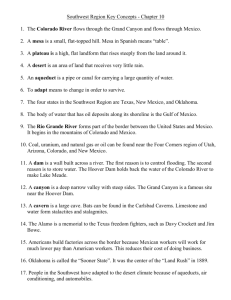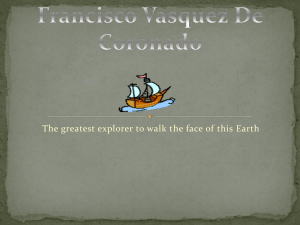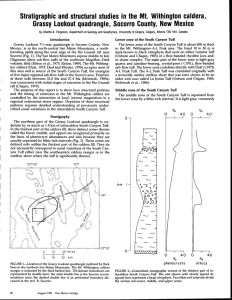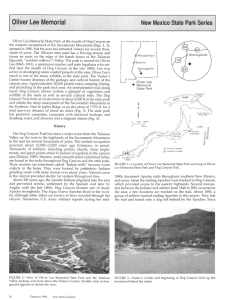The prominent saddle in the central San Mateo Mountains, Socorro
advertisement
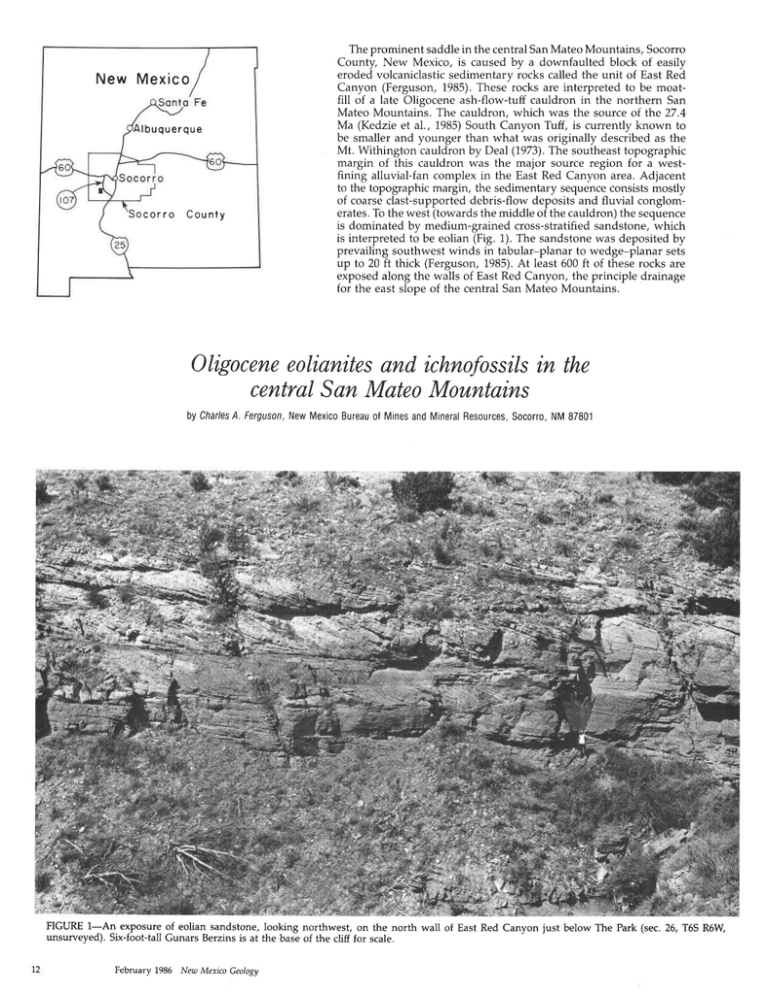
New Mexico Ib uq ue r q ue corro County Theprominent saddlein the centralSanMateoMountains, Socorro County, New Mexico, is causedby a downfaulted block of easily eroded volcaniclasticsedimentaryrocks called the unit of East Red Canyon (Ferguson,1985).These rocks are interpreted to be moatfill of a late Oligocene ash-flow-tuff cauldron in the northern San Mateo Mountains. The cauldron, which was the sourceof the 27.4 Ma (Kedzieet al., 1985)South Canyon Tuff, is currently known to be smaller and younger than what was originally describedas the Mt. Withington cauldron by Deal (1973).The southeasttopographic margin of this cauldron was the major source region for a westfining alluvial-fan complex in the East Red Canyon area. Adjacent to the topographicmargin, the sedimentary sequenceconsistsmostly of coarseclast-supporteddebris-flow depositsand fluvial conglomerates.To the west (towardsthe middle of the cauldron)the sequence is dominatedby medium-grainedcross-stratifiedsandstone,which is interpretedto be eolian (Fig. 1). The sandstonewas depositedby prevailing southwestwinds in tabular-planarto wedge-planar sets up to 20 ft thick (Ferguson,1985).At least 600 ft of these rocks are exposedalong the walls of EastRed Canyon, the principle drainage for the east slope of the central San Mateo Mountains. Oligocene eolianitesand ichnofo.ssf/s in the centralSan MateoMountains byCharles A Ferguson, NewMexico Bureau ol Mines andMineral Resources, Socorro, NM87801 FIGURE l-An exposur,eof eolian sandstone, looking northwest, on the north wall of East Red Canyon just below The Park (sec. 26, T5S R6W unsurveyed). Six-foot-tall Gunars Berzins is at the base of the cliff for scale. February 1986 New Mexico Geology FIGURE2-An inclinedburrow from the upperpart of the unit of EastRed Canyonin Allen Spring Canyon(sec.35, T65, R6W unsurveyed).The 3inch-wideburrow extendsfrom the top of an eoliansandstonesetthrough an overlying2-ft-thickbedof air-falltuff. Overlyingthe ashlayer(not shown in the photograph) is a bedof massivesandstone. Theburrowis filledwith ashwithin the lower sandstone,but in the ashlayerabove,it is filled with sand.If the burrowwasoccupiedduringdepositionof the air-falltuff, it is logicalthat the animal(s)would try to escape. In route to the surfacethe burrowinganimalwouldhavepushedstopedashto thebottomof itsburrow. Eventuallythe upper part of the burrow filled with sandfrom above. The upper part of the unit of EastRed Canyon containsthin sets of bedded air-fall tuff interlayeredwith sandstone,which preserve two ichnofossilsfound in Allen Spring Canyon, a tributary to East Red Canyon. One of the fossils is an inclined burrow with an in- north. The footprints are on display in the Mineral Museum at the New Mexico Bureau of Mines and Mineral Resourcesin Socorro. The inclined burrow and excellentexposuresof eoliansandstoneare within 0.5 mi walking distancefrom-TurkeySpring, which is at the end of Cibola National Forestroad 331. A more detailed description of the unit of East Red Canyon and the geology of the central San Mateo Mountains is availablefrom New Mexico Institute of Mining and Technology(Ferguson,1985). The report will soon be available,in revised form, as iNew Mexico Bureauof Mines and Mineral ResourcesOpen-file Report. References Deal, E G., 1973,Geologyof the northem part of the San Mateo Mountains, Socorro Counfy, New Mexico-a study of a rhyolite ash-flow tuff cauldron and ihe role of laminar flow in ash-flow tuffs: Unpublished Ph D dissertation, Universitv of New Mexico, Albuquerque, 136 pp. Ferguson,C. A., 1985,Geologyof the east-cenhalSan Mateo Mountains, Socono County, New Mexico: Unpublished M.S. thesis, New Mexico Institute of Mining and Technology, Socono, 118 pp. FIGURE 3-Arctiodactyl (spliFhooved mammal) footprint molds in a slab of bedded air-fall tuff from the upper part of the unit of East Red Canyon. The two round shapes at the bottom of the photograph are probably fecal pellet imprints. The pocket knife is 4 incheslong. New Mexico Geology February 1986 13
